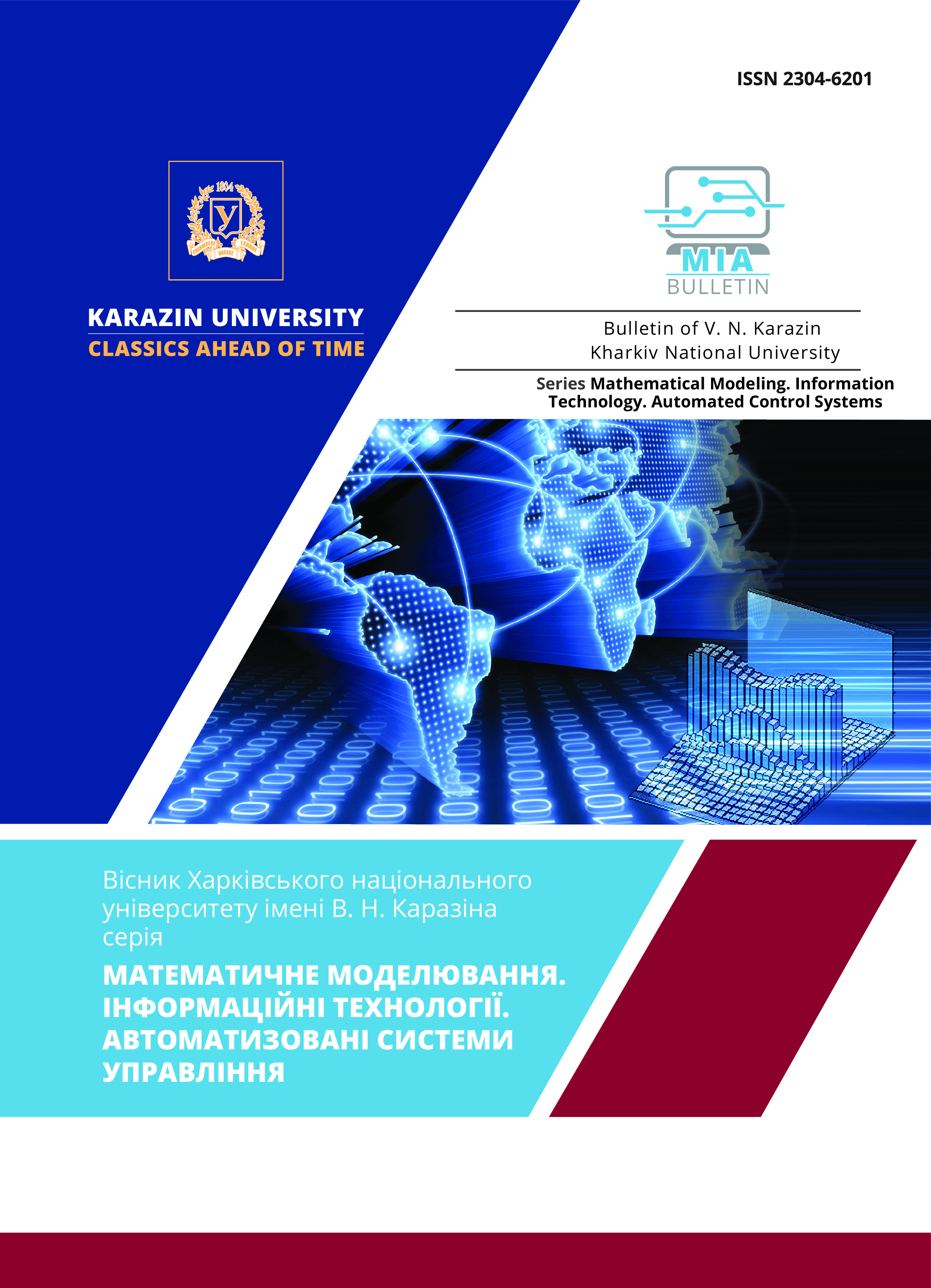Promising mathematical methods for early diagnosis of human circulatory disorders
Abstract
The aim of the study is elaboration of efficient mathematical models for early diagnostics of the cardiovascular diseases based on the blood flow rate Q(t) curves measured noninvasively in different parts of human body. Ultrasound, rheography, magnetic resonance imaging techniques could be useful for the purpose. In this paper a set of rheographic curves Q(t) has been measured in the abdominal aorta Qc(t), left and right upper Q1(t) and Q2(t) and lower Q3(t) and Q4(t) extremities of 36 volunteers of the age 36-65. Correlation analysis has been used for each pair {Qi(t),Qj(t)} of the measured discrete signals and some statistical indexes have been found significant for reliable early diagnostics of blood insufficiency due to arterial narrowing, improper control and age-related degenerative changes in the blood vessel walls. It is shown that in most individuals the digital curves Q1(t) and Q2(t) well correspond to a linear correlation with a small dispersion, while the curves Q3(t) and Q4(t) are usually weakly correlated, characterized by some time shift between them, significant dispersion and in some patients have unpredictable (chaotic) dynamics. Covariance indices for all the pairs {Qi(t),Qj(t)} of the curves, their spectra and the Lyapunov exponents are calculated. It is shown that in young healthy subjects all the covariances , the spectrum has 3-4 fundamental harmonics, and all Lyapunov exponents <0 that corresponds to regular or quasi-regular dynamics. In most elderly subjects the covariances , especially in the curves measured in the lower extremities, the spectra are complicated, and have positive Lyapunov exponents > 0, that corresponds to the possibility of chaotic dynamics. In the young healthy individuals without diseases and age-related degenerative changes of the cardiovascular system, there are some complications of the spectrum, the presence of both <0 and > 0. Thus, the values , and spectrum of the curves can be important parameters for early diagnosis of age-related changes and circulatory disorders. Their prompt computations can be easily done on any type of cheap and noninvasive ultrasound or impedance rheography curves. Regular measurements and accumulation of such curves in a personal database will increase the quality of individual and population healthcare.
Downloads
References
/References
Ronkin, М. А., Ivanov, L. B. Rheography in clinical practice. М.: МBN, 403 p. 1997. [in Russian]
Kizilova, N. “Comparative analysis of ultrasound and rheographic methods of the arterial pulse wave study.” Abstracts of IX Russian conference on biomechanics. Nizny Novgorod: IAP RAS. pp. 50-51. 2008. [in Russian]
Litvinenko, A.F., Zubkova, S.T. “Rheovasography in diagnosis of circulatory disorders of the lower extremities in patients with diabetes mellitus.” Therapevtic Arhive. 49(5). pp. 25-30. 1977.
Kon, M.V., Kolesnikova, R.S. “Rheovasography in the differential diagnosis of vascular diseases of the lower limb.” Clinical Medicine. 62(8). pp. 51-54. 1984.
Lutsevich, E.V., Bereshadenko, D.D., Ivanov, V.V., Bagauri, N.M., Pechenaia, N.A. “Rheovasography in the Evaluation of Conservative Treatment Methods in Obliterating Atherosclerosis.” Surgery. 4, pp. 105-108. 1991.
Kizilova, N. Solovjova, H. “Computer modeling in biomechanics of blood circulation.” V.N. Karazin Kharkov National University Vistnyk. Ser. “Mathematical modeling. Information technologies. Automated control systems». 41. C.39-45. 2019.
Kizilova, N. “Three chamber model of human vascular system for explanation the quasi-regular and chaotic dynamics of the blood pressure and flow oscillations.” Applied Non-Linear Dynamical Systems. Springer Proceedings in Mathematics & Statistics, Vol. 181. рр. 209-220. 2016.
Pikovsky, A., Politi, A. Lyapunov exponents. A tool to explore complex dynamics. Cambridge University Press. 255р. 2016.
Ронкин М. А., Иванов Л. Б. Реография в клинической практике. М.: МБН, 1997. 403 с.
Кизилова Н.Н. Сравнительный анализ ультразвуковых и реографических методов исследования пульсовых волн в артериях. Тезисы докладов IX Всероссийской конференции по биомеханике. Нижний Новгород: ИПФ РАН. 2008. С. 50-51.
Litvinenko A.F., Zubkova S.T. Rheovasography in diagnosis of circulatory disorders of the lower extremities in patients with diabetes mellitus. Therapevtic Arhive. 1977. 49(5). pp. 25-30.
Kon M.V., Kolesnikova R.S. Rheovasography in the differential diagnosis of vascular diseases of the lower limb. Clinical Medicine. 1984. 62(8). pp. 51-54.
Lutsevich E.V., Bereshadenko D.D., Ivanov V.V., Bagauri N.M., Pechenaia N.A. Rheovasography in the Evaluation of Conservative Treatment Methods in Obliterating Atherosclerosis. Surgery. 1991. 4, pp. 105-108.
Кізілова Н.М., Соловйова О.М. Комп’ютерне моделювання в біомеханіці кровообігу. Вісник Харківського національного університету імені В.Н. Каразіна, серія «Математичне моделювання. Інформаційні технології. Автоматизовані системи управління». 2019. 41. C.39-45.
Kizilova N. Three chamber model of human vascular system for explanation the quasi-regular and chaotic dynamics of the blood pressure and flow oscillations. Applied Non-Linear Dynamical Systems. Springer Proceedings in Mathematics & Statistics, Vol. 181. 2016. рр. 209-220.
Pikovsky A., Politi A. Lyapunov exponents. A tool to explore complex dynamics. Cambridge University Press. 2016. 255р.




